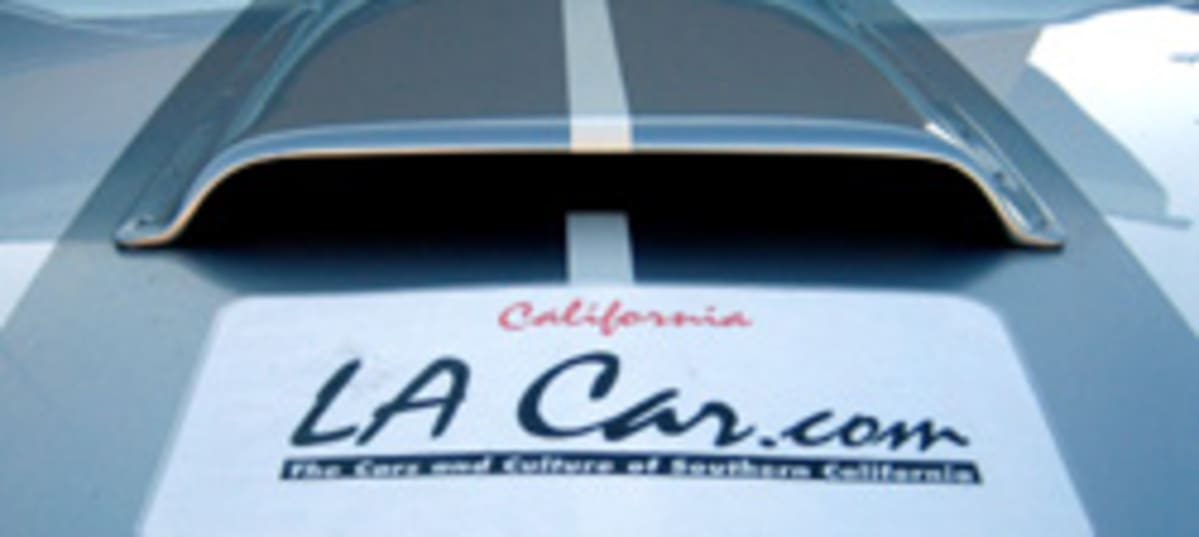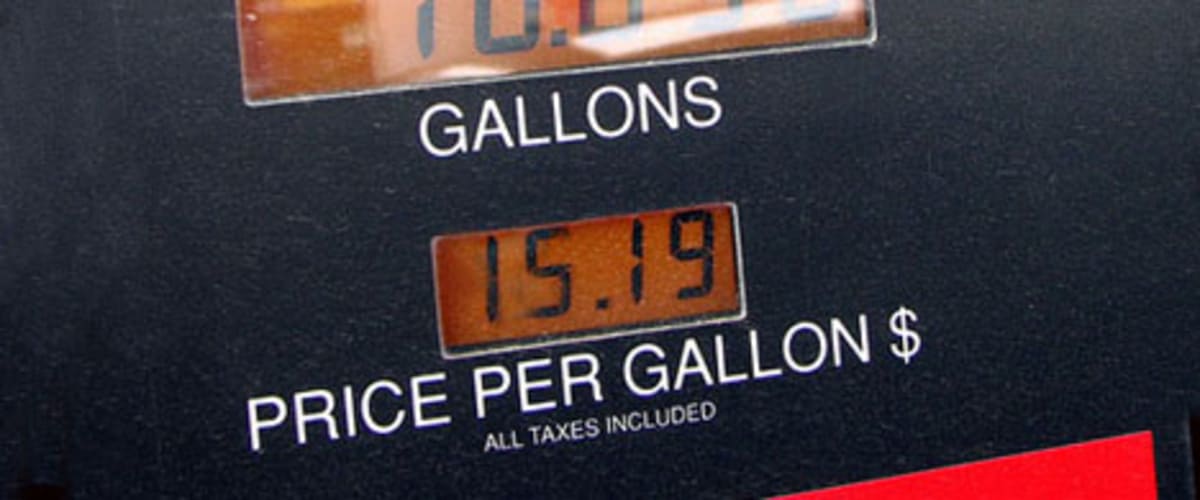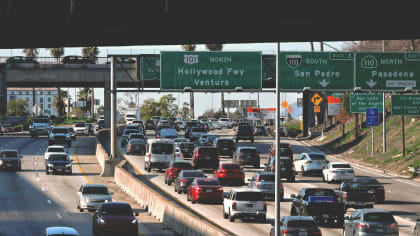BACK SEAT DRIVING - MAY 2008
This article is from our archives and has not been updated and integrated with our "new" site yet... Even so, it's still awesome - so keep reading!
Published on Thu, May 1, 2008
By: The LACar Editorial Staff

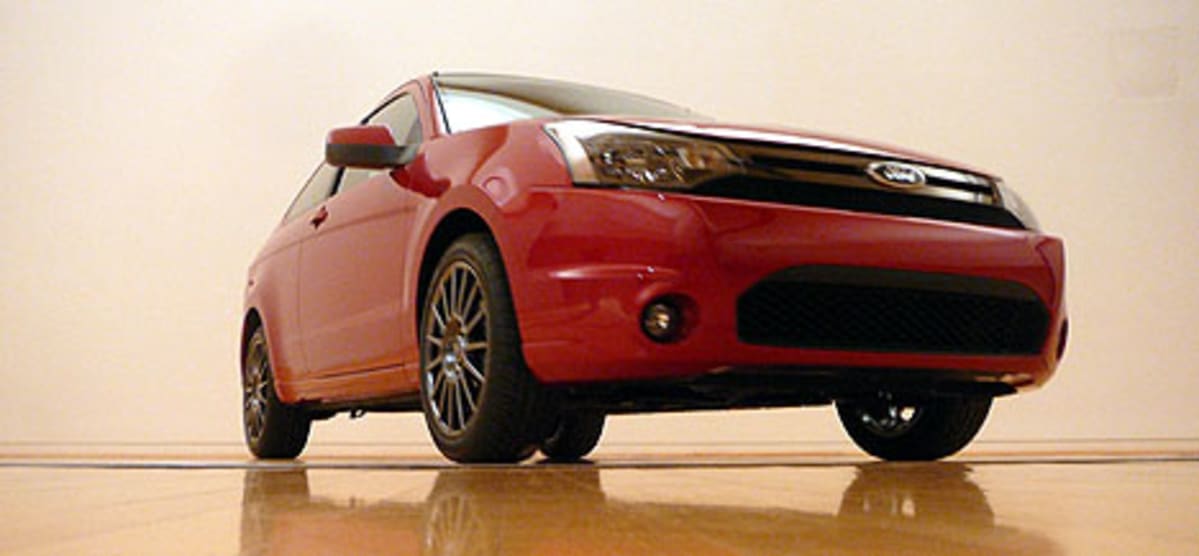
Ford Focus SES
NAKANO: BACK SEAT DRIVING
RE-FOCUSED
Ford Re-Discovers Youth with the 2009 Focus SES
It seems like too long since Ford offered a vehicle that was specifically
targeted to the youth market. Even the Mustang appeared to be more focused at
rekindling the interest of baby boomers rather than an effort truly aimed at
today's youth. That's about to changes, as Ford re-discovers the youth market
with its 2009 Focus Coupe SES.
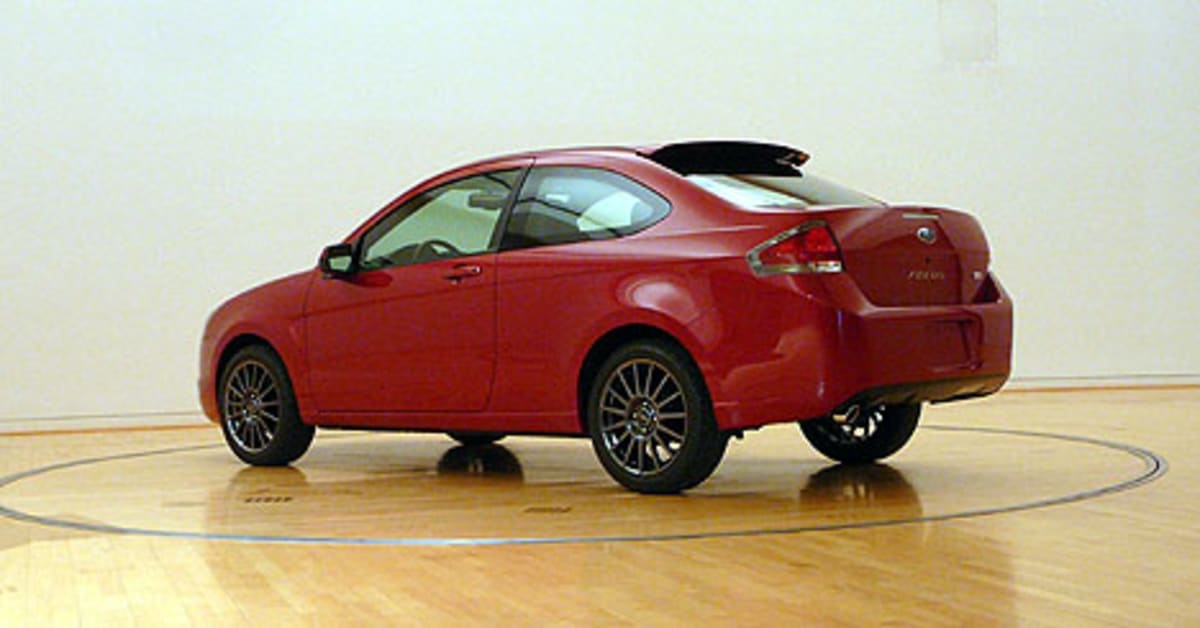
"We've spent a lot of time talking with small-car customers and Focus
enthusiasts," said Sam De La Garza, Focus marketing manager. "Their overwhelming
feedback was that a sportier exterior design could attract even more Millennials,
or those people born between 1980 and 1995 - 11,000 of whom
reach driving age every day in the U.S."
With that in mind, the lower front fascia of the coupe incorporates a larger
open area that bares a strong resemblance to the acclaimed design of the new
global Ford Fiesta subcompact. The fog lamps - now standard - are better
integrated into the overall design of the front fascia, and its signature
two-bar chrome front grille and chrome accents around the headlamps have been
darkened for differentiation.
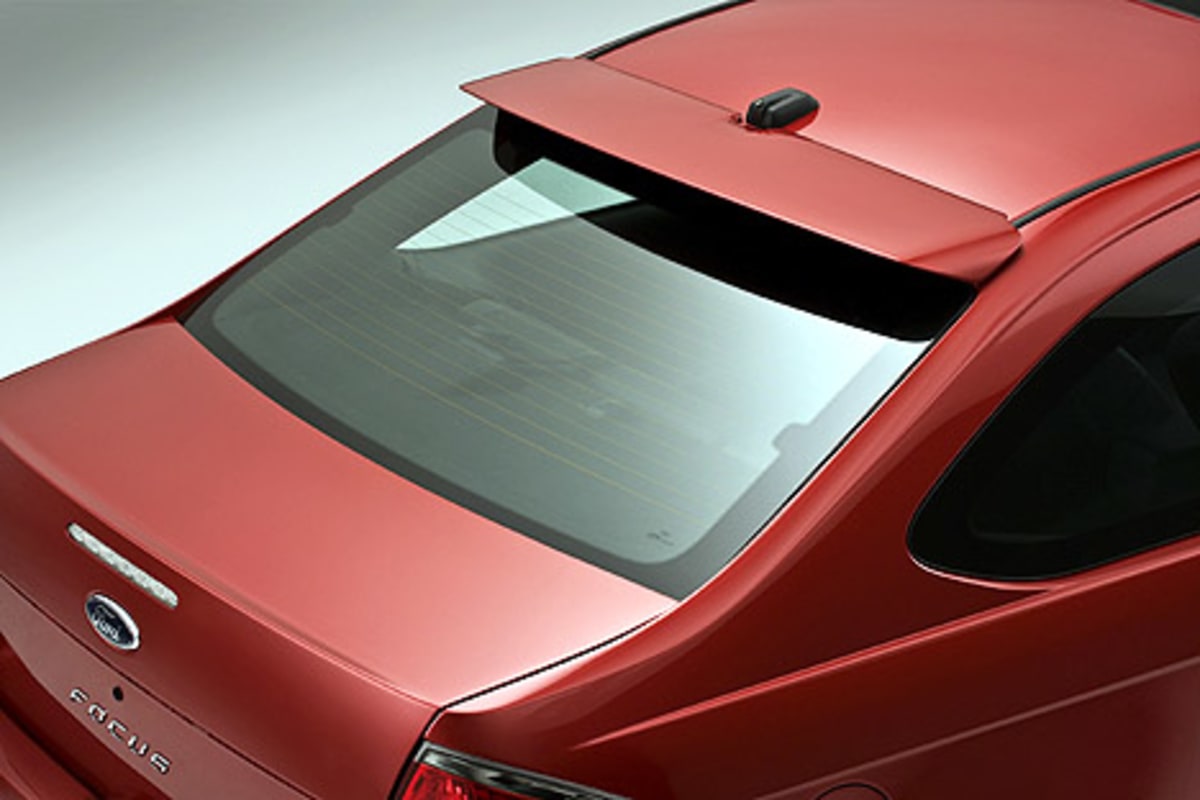
For added differentiation, the high-end Focus SES features a standard high-mounted spoiler that is incorporated into the design of the roof - a la GTI. New premium-painted Dark Chrome 17-inch aluminum wheels, also standard on SES, complete the coupe's redesigned exterior. The 2009 Focus SES coupe features a tad more horsepower and a throatier sound, thanks to a new sport-tuned exhaust. The SES coupe with a four-speed automatic transmission will have a 4.2 final drive ratio to deliver quicker off-the-line acceleration for a faster 0-60 mph time. Also setting the Focus coupe apart from other small cars is Ford's industry-exclusive SYNC technology, which will be standard equipment on the SES series and optional on the SE. SYNC is a fully integrated in-vehicle, voice-activated communications and entertainment system for customers to use their Bluetooth cell phones and digital media players. Okay, the SES isn't a Prius-beater in the gas mileage department (but it's very good nonetheless). Performance-orientated GTI and Civic Si owners won't be trembling in their boots. But the Focus SES should undercut all three cars in the price department by a wide margin. The 2009 Focus Coupe, available later this summer, will have an MSRP that starts at $15,920 and its overall EPA rating is expected to remain at a commendable 35 mpg. The exact price for the SES model has yet to be announced.
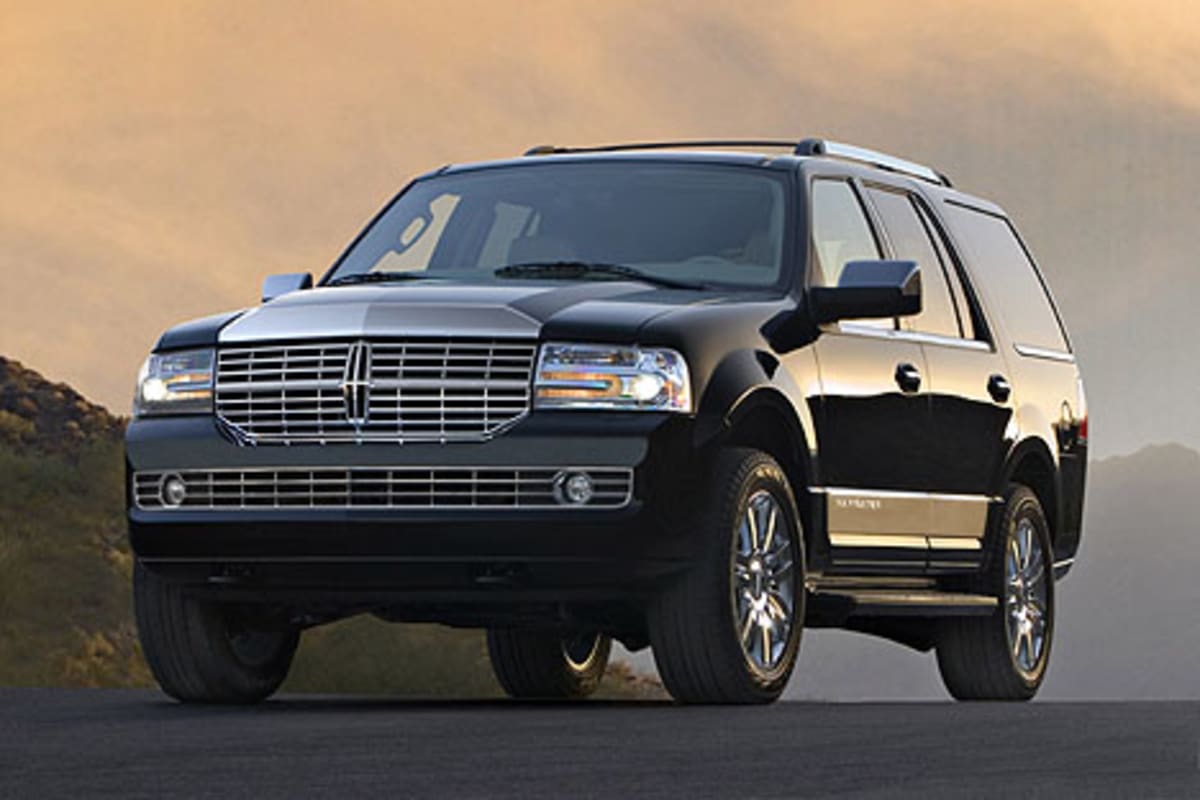
NAKANO: BACK SEAT DRIVING KELLEY BLUE BOOK: DON'T SELL YOUR SUV Kelley Blue Book Says Cost May Outweigh Gains It's no secret that increasing gas prices have encouraged consumers to trade-in their SUVs for smaller, more fuel-efficient vehicles, but it may be important to examine the big picture before making a final decision. According to Kelley Blue Book, the leading provider of new and used vehicle information, the SUV market has dropped more than eight percent since September of last year. Kelley Blue Book data reveals depreciation between three to five thousand dollars in SUVs during the past six months. While depreciation is common, eight percent is generally seen over 12 to 18 months, not six to eight. Mid-size SUVs have dropped seven percent, while large SUVs have declined eight percent. In addition, full-size trucks have depreciated eight percent along with the entire market. "While it might be tempting to trade-in your big SUV after spending $100 to fill its gas tank, it is important you take everything into consideration before you decide to change vehicles or you may end up spending thousands of dollars to save hundreds," said Jack R. Nerad, executive editorial director and executive market analyst for Kelley Blue Book and kbb.com. "Large SUVs and SUVs with four-wheel drive are nearing their minimum price points so we expect depreciation will slow, and we anticipate there will be an uptick in buyer interest in SUVs as we approach winter, contingent on regional factors and gas prices. Hanging onto your current vehicle and riding out the current gas prices could be the most economical answer." Don't let emotions make your decision - you might be troubled by your current gasoline costs, but costs associated with acquiring, operating and insuring a new vehicle will most likely outweigh them. Below are a few suggestions KBB offers in determining whether to sell your SUV: · Is your SUV paid off? If not, be aware that! you might be 'upside down' on your current auto loan, owing more than it's worth · Do the math - look at the monthly payments for your alternative vehicle, check your credit and research all financing options · Calculate monthly gas mileage for alternative used and new vehicles. Miles-per-gallon information and fuel-tank capacities are available on www.kbb.com · Choose wisely - make the decision that best fits your needs without tiring your purse strings About Kelley Blue Book (www.kbb.com) Since 1926, Kelley Blue Book has provided vehicle buyers and sellers with new and used vehicle information. The company also reports vehicle pricing and values via products and services, including software products and the famous Blue Book® Official Guide.

NAKANO: BACK SEAT DRIVING GAS CRISIS? WHAT GAS CRISIS? 7 Reasons Why Rising Gas Prices Are Just Fine There are lots of reasons why one might protest the rising cost of gas, including how it affects truck drivers, its impact on the cost of food, and the disproportionate burden it places on the working class. However, not everything is negative about the rising prices (particularly non-diesel prices). Here are seven for the road: 1. Suddenly, large SUVs are so yesterday Some people really need these vehicles, but most don't. What used to be a symbol of the rugged outdoors and the pioneering spirit is now one of wretched excess and the intellectually challenged. Resale values have dropped like flies on a hot August night, and CNN now talks about SUVs joining the endangered species list. 2. Finally, a serious migration toward smaller, more fuel-efficient vehicles The rising gas prices are doing what decades of CAFE (Corporate Average Fuel Economy) standards have failed to do: Reduce this country's dependence on fossil fuels. 10-year old Geo Metros and the like are now more popular than ever. 3. Smaller cars means more room on the freeways during rush-hour traffic The math speaks for itself. If the thousands of vehicles stuck in rush-hour traffic are one-third shorter in overall length, it frees up a whole lot of room. Even with the same number of vehicles, bumper-to-bumper traffic congestion is significantly lessened. 4. Higher prices means more people choosing not to drive The Los Angeles Times has already reported fewer cars on the road as a result of the high price of gasoline. More people are electing alternative forms of transportation, such as carpooling, public transportation, biking, and walking. 5. Higher gas prices reduces obesity Taking alternative means of transportation, such as public transportation, biking, and walking, means you'll be getting more exercise. If you think this is absurd, consider Paris and New York City, where the residents rely heavily on public transportation (the subways). Parisians and New Yorkers do an awful lot of walking to and from the subways. As a result, you just don't see many obese people walking the streets in those cities. 6. Have you seen what gas costs in Europe? According to the Energy Information Administration, the average price of a gallon of gas in Europe ranges from $8 to $9 a gallon. This has impacted European car owners to the point where diesel-powered cars now outsell gasoline-powered cars. Europe has been moving towards a majority diesel fleet since the European Commission encouraged lower taxes on diesel fuel to encourage its spread at the pump, reports Platts, the energy division of the McGraw-Hill Companies. 7. When it comes to climatic warming, low gas prices are part of the problem and not part of the solution. Simply making cars more fuel efficient encourages people to drive more. One of the arguments against higher CAFE standards has been that making cars more fuel efficient will encourage owners to drive even more, thus negating any benefit it may have toward reducing our dependence on oil or reducing global warming. In short, not all is doom and gloom about the rising price of gas. Sustainable solutions may be all the rage for now, but nothing has made us take a second look at our dependence on oil quite like the power of the pocketbook. In the end, it may be the biggest motivating factor for going green.
NAKANO: BACK SEAT DRIVING DRIVING WHILE DISTRACTED 4 Out of 5 Cell Phone Owners Talk on the Phone While Driving A national insurance company released its second annual DWD (Driving While Distracted) study, which found that, while 98 percent of Americans claim to be safe drivers, a vast majority also admit to DWD. The study, which was conducted by Nationwide Insurance, also found that more than four out of five cell-phone owners are guilty of talking on their phones while driving, and nearly three-quarters (72 percent) of all drivers admit to partaking in some form of distracting behavior while driving, from cell phone use to eating. Further, almost 80 percent have been in a vehicle with distracted drivers and more than 40 percent have been hit or almost hit by another driver who was talking on a cell phone while driving. "Our survey shows that four out of five drivers have been both guilty of, and witnesses to, DWD" said Bill Windsor, Associate Vice President of Safety for Nationwide. "Clearly, distracted driving has taken over our roadways, and our survey shows that no one is immune - no matter how safe they think they are. In fact, according to the National Highway Transportation Safety Administration, distracted driving causes 80 percent of all accidents." The survey found that the prevalence of DWD can be attributed to technology and our societal mindset to be available at all times. Too Much Technology
- Nearly half (48 percent) considered cell phones and other technology use to be the most dangerous distraction.
- Availability of technology was cited by 35 percent as the reason DWD is so common today.
- Use of technology extends beyond speaking on the phone to text messages and e-mail. Nearly 40 percent of teens and Gen Yers who own cell phones admit to texting while driving, which requires additional visual, cognitive and manual attention.
Too Much Pressure
- Almost two-thirds of drivers who own cell phones said their colleagues, friends and family expect them to be available by cell or other electronic communication devices at all times.
- Our current societal mindset and busy, on-the-go lifestyles were cited by 35 percent as the reason why people drive distracted. Specifically, multitasking was cited by 22 percent and having too much to do and too little time was cited by 30 percent.
- In addition to multitasking, the survey found DWD is growing in prevalence simply to stay connected socially. Nearly half of teens and Gen Y cited staying connected socially as a reason for driving while distracted.
- "We found Americans think they're safe drivers, even though they admit to driving while distracted" continued Windsor. "This dangerous false sense of confidence combined with current 'rules' making it socially and professionally unacceptable to not respond immediately to a call or e-mail, have made DWD commonplace, but Americans need to realize that there is no such thing as safe DWD."
Key Findings from the Survey
- Older, But Not Wiser: DWD is a dangerous habit affecting drivers of all ages. In fact, only three percent of those surveyed felt that the prevalence of DWD was due solely to inexperienced or teen drivers. Well above half of all generations (78 percent of Generation Y, 80 percent of Generation X and 65 percent of Baby Boomers) were guilty of participating in tasks such as talking on a cell phone or eating. While teenage drivers were slightly less guilty of talking on their cell phones while driving at 60 percent, it does not mean that they are immune. In fact, the lower occurrence rate could be attributed to factors such as graduated drivers license laws for teens that ban cell phone use while driving, increased parental control, or the fact that they are just learning and more apt to follow the rules.
- Accidents Happen: Distractions made up three of the top four reasons to why respondents have to suddenly apply the brakes while driving: daydreaming, adjusting music, and use of a cell phone/electronic device. Other drivers were cited as the other top reason.
- The Riskier Road: Overall, more cell phone owners found themselves talking or texting while driving on the highways or through city streets than when they were parked, in traffic or at a light (almost 50 percent vs. almost 37 percent). However, teens were more likely to talk and text while not in motion than their older counterparts.
- Curbing Behavior: When asked what would be most successful in preventing cell phone use while driving, respondents were closely split between technology that would automatically prevent devices from working in the car (43 percent) and laws banning the use of cell phones/electronic devices while driving (42 percent). However, in curbing all distractions, respondents placed more responsibility on drivers themselves. The individual driver was listed as most responsible for curbing the behavior by 41 percent of respondents. "When it comes to preventing distracted driving, laws, company policies and education are important, however, individual Americans - whether we've had our license for four months or four decades - are in the driver's seat when it comes to putting the brakes on DWD" said Windsor.
"The National Highway Transportation Safety Administration estimates that 115 people are killed in auto accidents each day in the U.S. With distractions being such a large cause of accidents, it's clear that DWD is an issue in our society that needs to be curbed now" said John Ulczycki, Executive Director of the Transportation Safety Group at the National Safety Council. "We look forward to partnering with Nationwide to help curb this dangerous trend that has taken over our roadways." For more information on DWD - facts and figures, tips on safe driving and updates on Nationwide's partnership with NASCAR to raise awareness of DWD, go to www.nationwide.com/dwd. The survey was conducted via phone by MRSI. A total of 1,503 phone surveys were completed between April 15 and April 24, 2008, among a national sample. All respondents were required to be between the ages of 16 and 61 and drive a car. A total of 749 men and 754 women were surveyed. The survey has 2.5 percent margin of error. Generations were defined as: Teens: 16 to 17 years of age; Generation Y: 18 to 30 years of age; Generation X: 31 to 44 years of age; Baby Boomers: 45 to 61 years of age.
NAKANO: BACK SEAT DRIVING $4 PER GALLON TOO HIGH? TRY $12-15 PER GALLON If you think $4 a gallon gas is too much to pay, brace yourself. A couple of expert sources say $12-15 per gallon is more than just possible. "The prices that we're paying at the pump today are, I think, going to be 'the good old days,' because others who watch this very closely forecast that we're going to be hitting $12 and $15 a gallon, and then, after that, when world oil production goes into decline, we're going to talk about rationing," Robert Hirsch, Management Information Services Senior Energy Advisor, said on CNBC's "Squawk Box." "In other words, not only are we going to be paying high prices and have considerable economic problems, but in addition to that, we're not going to be able to get the fuel when we want it." Hirsch argued that the maximum in world oil production has already been hit. "Th would hit a sharp peak and then drop off, and what's happened is, we've hit a plateau in world oil production, and that plateau has been ongoing since about the middle of 2004," he said. Those who argue that new technology and new types of energy will solve the problem aren't on solid ground, Hirsch suggested. "There's no single thing that's going to solve this problem, because it's as massive as one can possibly imagine." Hirsch later told the Business & Media Institute that the $12-$15 a gallon wasn't his prediction, but that he was citing Charles T. Maxwell, described as the "Dean of Oil Analysts" and the senior energy analyst at Weeden & Company, says Jeff Poor of BMI. "Still, Hirsch admitted the high price was inevitable in his view," reports Poor. "I don't attempt to predict oil prices because it's been impossible in the past," Hirsch said to Poor in an e-mail. "We're into a new era now, and over the next roughly five years the trend will be up significantly. However, there may be dips and bumps that no one can forecast; I wouldn't be at all surprised. To me the multi-year upswing is inevitable."

NAKANO: BACK SEAT DRIVING Most Consumers Won't Consume with the Rebate Checks 81 percent of all car shoppers surveyed by LeaseTrader.com said they do not plan to use their government tax rebate check towards a vehicle. Although car sales have slowed considerably in today's economy, those who participated in the LeaseTrader.com survey have no plans of rushing to their nearest car lot with rebate check in hand. A one-week online survey on LeaseTrader.com taken by thousands of car shoppers revealed that the government tax rebate check will not be a big enough incentive to encourage car shoppers to actually make a vehicle purchase. "The results of this survey give an indication of just how much the current economy has affected the average American consumer," said Sergio Stiberman, CEO and founder of LeaseTrader.com. "Although the government is hoping to provide incentive for people to spend money and increase economic activity, this survey shows that a good majority of Americans won't be using the money towards a car purchase." A senior economist at Ford Motor Company is even less optimistic about the rebate checks. According to Ford's Emily Kolinski Morris, only about a quarter of the money will go towards any kind of spending. Morris cites what happened when the federal government issued a similar tax rebate seven years ago. "An estimated 25 percent of rebate checks were spent in 2001, and that is expected this time around, too," she said at a Consumer Bankers Association's automotive finance conference in San Francisco, reports Steve Finlay of Wards Auto. Morris cited a survey taken this year indicating 43 percent of Americans will use the money to pay off debts, 26 percent will save it and 24 percent will spend it, reports Finlay. The rebates will range from $300 to $600, or $1,200 for married couples, plus $300 for each dependent child.
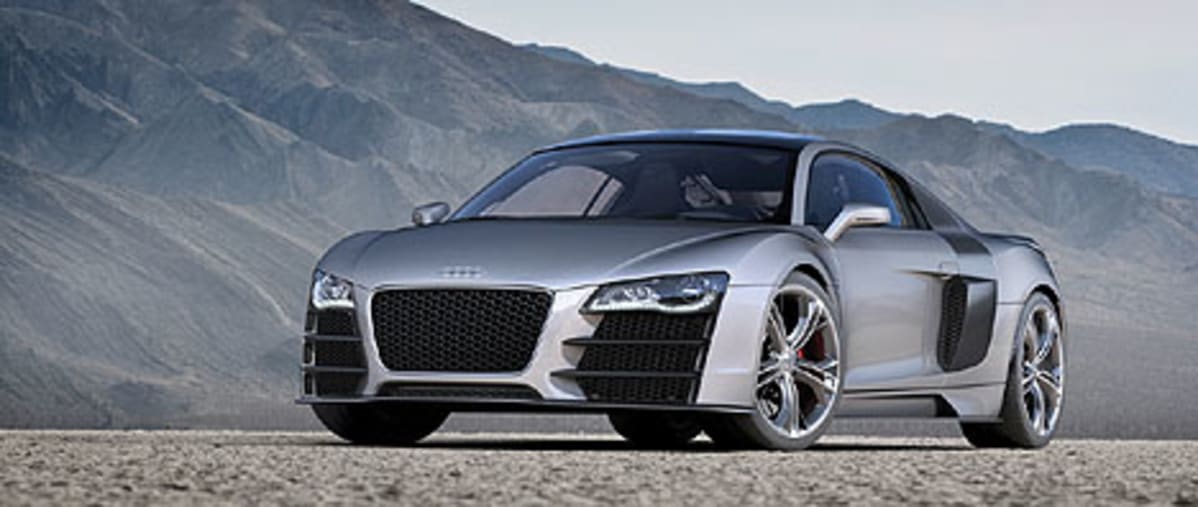
Audi's diesel-powered R8 TDI concept car
NAKANO: BACK SEAT DRIVING Addressing the Gas Crisis in the USA With premium gasoline already cresting $4.00 per gallon in some parts of the country, the pressure is on the presidential candidates to offer quick relief for consumers. A couple of the presidential hopefuls have called for a holiday on gasoline tax this summer. Thus, the candidates who earlier preached ways to kick America's oil habit are now focused on ideas that continue to fuel consumers' addiction to oil. The idea has been met with near-universal poo-pooing by the community of economic experts. Since refineries can't increase supplies of gasoline in the space of a few summer months, economists say lower prices will just boost demand and the benefits will flow to oil companies, not consumers. Economists say it's a poor way of getting money to the households that need it most and warned that it might end up in the cash tills of the oil companies. "You are just going to push up the price of gas by almost the size of the tax cut," said Eric Toder, a senior fellow at the Urban-Brookings Tax Policy Center in Washington. "If you want to provide households tax relief, a direct rebate ... is more effective. Not all of the tax relief from a gas tax holiday will be passed on to consumers. Some will likely be kept by refiners," said Greg Mankiw, a former chairman of President George W. Bush's Council of Economic Advisers. New York Times columnist Paul Krugman is similarly underwhelmed: "It's Econ 101: the tax cut really goes to the oil companies," he wrote on his blog. If reducing the tax on gas will only encourage refineries to raise prices (and profits), perhaps its time to take a harder look at federal price regulation - not a broad regulation covering all fuel prices, but one focused on the price of diesel. Remember when diesel used to be cheap relative to the cost of regular gas? Now it even exceeds the cost the premium gas. Yet, diesel is what drives our nation's truck drivers, which in turn impacts the price of produce and other goods enjoyed by consumers. Diesel power also contributes significantly less to climatic warming than regular gasoline. If the price of diesel is reduced, it can motivate consumers to take a closer look at the new crop of clean, fuel-sipping diesel-powered cars being introduced by Volkswagen, Honda, Mercedes, and others. And if you think diesel cars are dull, take a look at the Audi R8 TDI above (and guess what type of engine has been in the winning race car at Le Mans for the past couple of years?). The down-side to diesel price regulation is that oil companies may compensate for the loss in diesel profits by raising the price of regular gas. But with carmakers introducing more fuel-efficient cars (including clean diesel cars), consumers can choose to lessen their dependence on gasoline as a way to lessen their fuel costs. Diesel can make a real difference if the incentives for consumers made it worth their while. Add to this the benefit to our nation's truck drivers and to the cost of everything that is delivered by trucks makes it hard to ignore the merits of diesel price regulation.
A
JOURNAL OF LOS ANGELES & ITS CAR CULTURE That
was LA Car's subtitle when it started back in 1997. It's original website
address was about five times the size of lacar.com. Since then, La Car
became LA Car. Its subtitle became
Reporting From Car Culture Ground Zero, then From The Heart of Car
Culture, to today's The Cars and Culture of Southern California. At
all times, however, we aimed to chronicle the Southland's automotive spirit - much like
one's own
journal or diary.
LA Car has always been a great source
to come back to from week-to-week, to see what articles and reviews have been
added to our rather staggering database. With Back Seat Driving, a.k.a.
BSD (note the similarity to two well-worn abbreviations, BS and BFD) and Live
Wires - Hot & Tender News From the Car Culture (co-located with Back Seat
Driving, and updated at least daily), we give you some reasons to
come back more often (all opinions, by the way, are those of the respective
author).
So, go
ahead and bookmark www.lacar.com. We'll be
sure to always provide a link to Live Wires and the latest Back Seat
Driving blog entry. In the meantime, welcome to the journal and journey from
the heart of the car culture. - Roy Nakano For
past Blog entries, click the following:
April 2008
March 2008
February 2008
January 2008
December 2007
November 2007
October 2007
September 2007
August 2007
July 2007
June 2007
May 2007
April 2007
March 2007
February 2007
January 2007
December 2006
November 2006
October 2006
September 2006
August 2006
July 2006
June 2006
May 2006
April 2006
March 2006
February 2006
January 2006
December 2005
November 2005
October 2005
September 2005
August 2005
July 2005
June 2005
May 2005
April 2005
March 2005
February 2005
January 2005
December 2004
November 2004
October 2004
September 2004
August 2004
July 2004
June 2004
May 2004
April 2004
